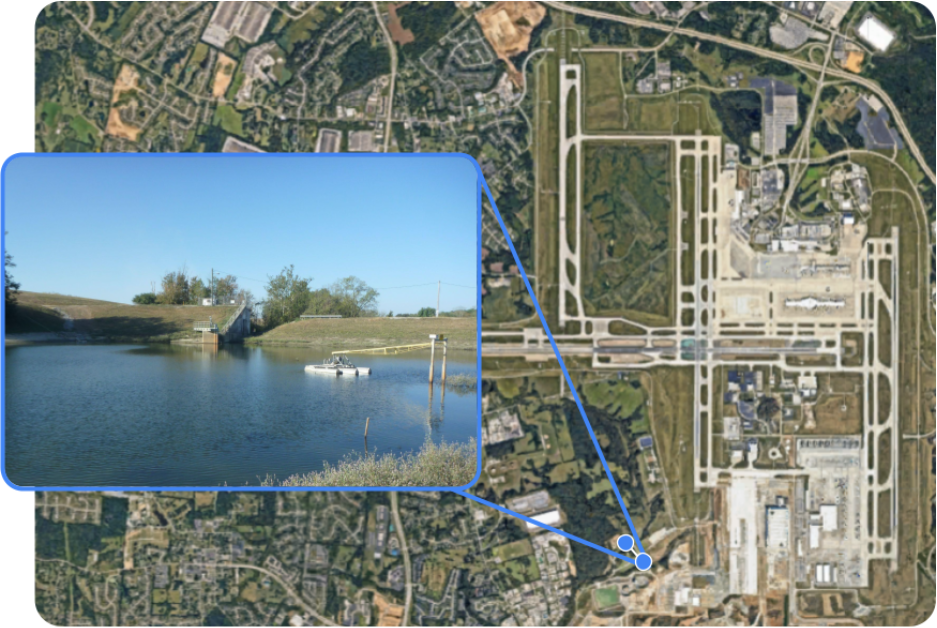.png)



The Challenge
The Cincinnati/Northern Kentucky International Airport (CVG) sits at the headwaters of Gunpowder Creek, a waterway listed as impaired in 2002 by sediment, nutrients, and bacteria. CVG sought to better manage runoff from a 3,738-acre drainage area that drained to an area with recurrent flooding and erosion, which threatened critical downstream infrastructure and roads. In addition to these broader issues, the airport is committed to proactively managing the environmental effects of its critical safety operations. Runoff from aircraft de-icing, a non-negotiable requirement for safe winter air travel, contains glycols that can naturally reduce dissolved oxygen (DO) levels in the water. The airport sought not only to mitigate flood risks and capture pollutants, but also actively improve the creek's overall health to support its eventual delisting as an impaired waterway.
The Solution
CVG partnered with Strand Associates on design and Williams Creek Management on implementation of Opti's Continuous Monitoring and Adaptive Control (CMAC) technology for its stormwater facility. The solution effectively reduces peak discharge during rainfall events, mitigating flood risks to downstream infrastructure. It also enhances pollutant capture, holding water with low DO levels until it can be treated by an aerator and safely released. Due to its adaptive operations, the CMAC system managed additional volume over time as CVG routed more drainage area to the automated outlet. These performance gains were achieved through changes to system settings in the CMAC software.
Outcomes and Results
Brought online in 2023, this project provides 58 acre-feet of adaptive storage capacity and manages over 1,700 MG/yr of stormwater runoff. Automated control reduces peak discharge by 30% for the 2-year 24-hour storm, preventing over 2 million pounds of sediment transport and protecting downstream infrastructure. Achieving this level of improvement through traditional stormwater practices would likely have required millions of dollars in infrastructure costs. This project serves as an example of how innovative design and technology can provide stormwater improvements at a fraction of the cost of traditional solutions.


.png)

